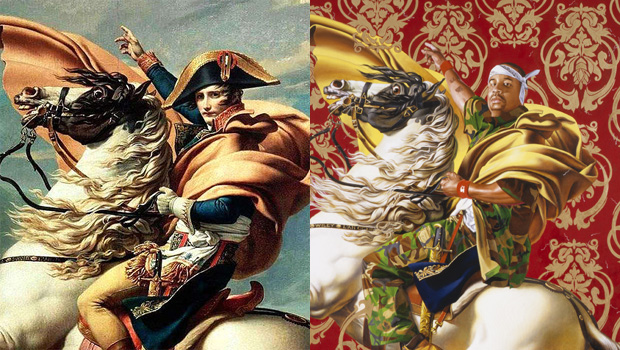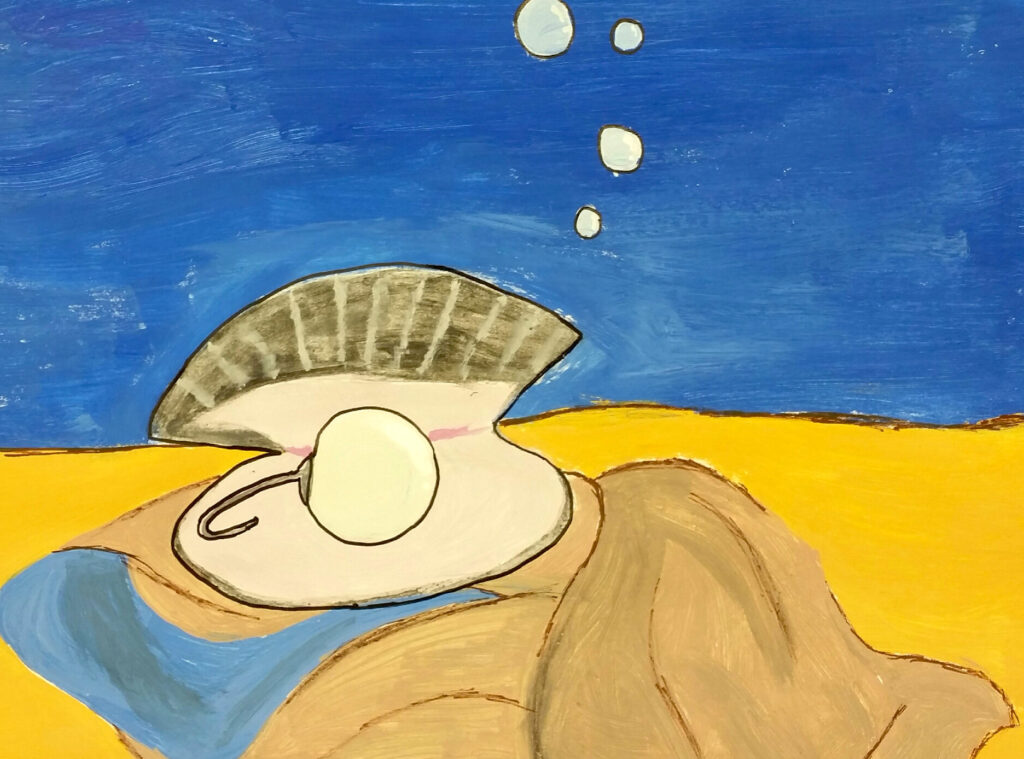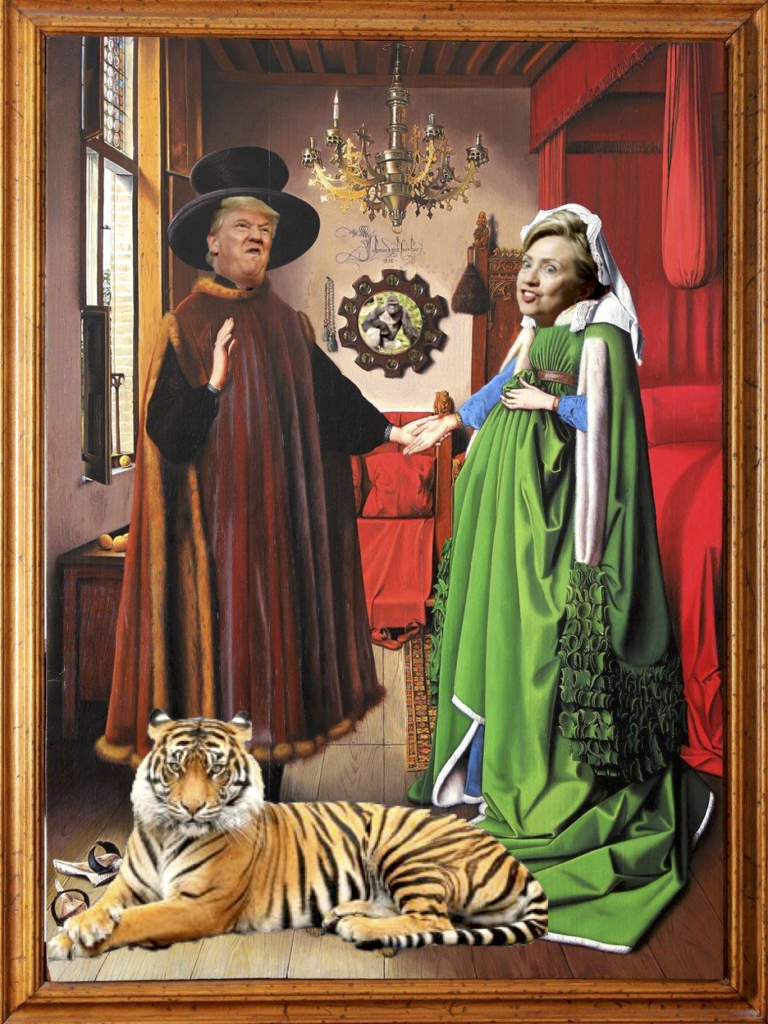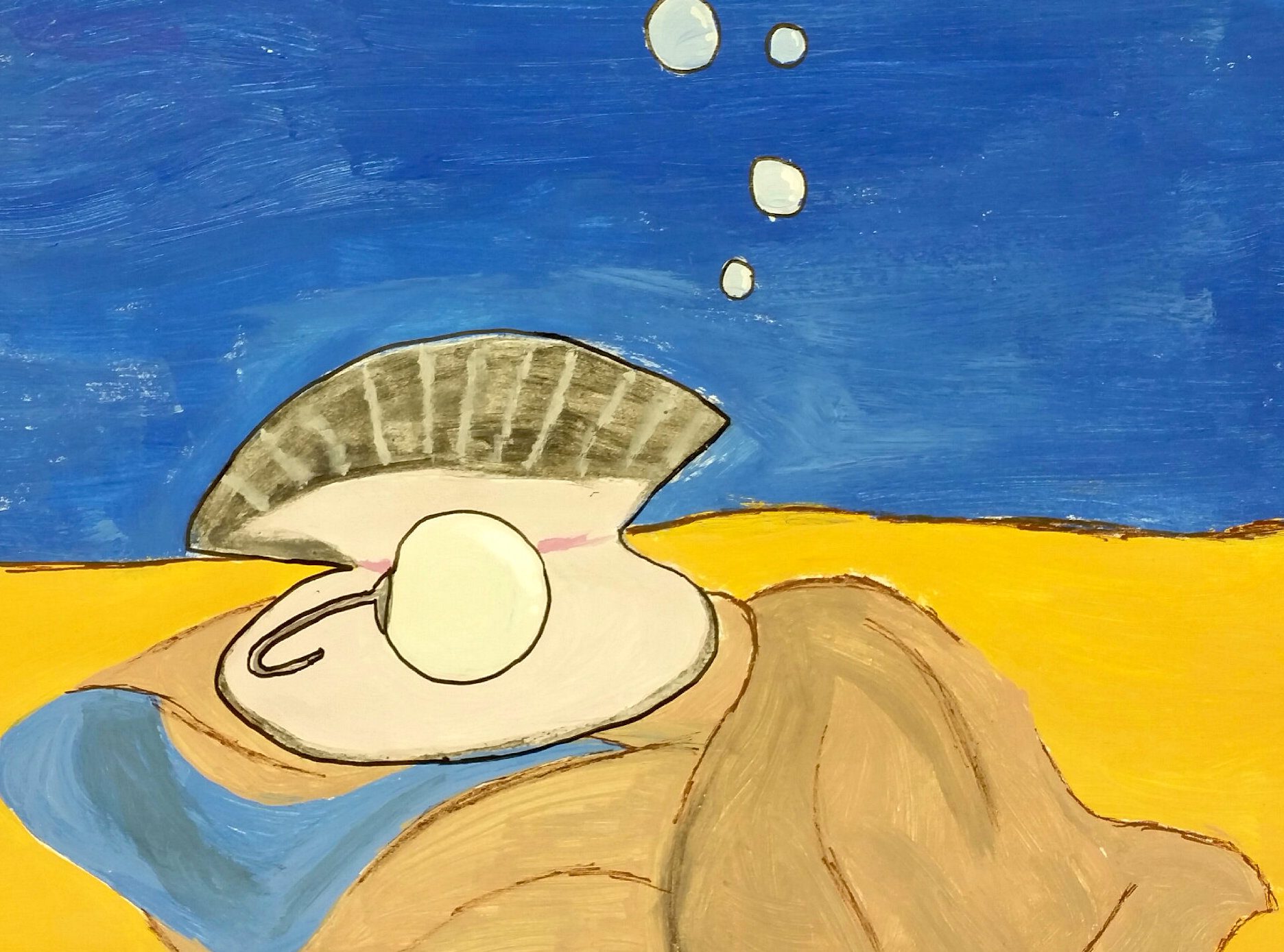Creative thinking is an essential skill for artists. However, it can be a challenge for art students to learn and for art teachers to teach. In my room, I like to build creative skills through games and challenges. Today, I’d like to share one of my most effective lessons on creativity called the Art History Remix.
Let’s take a look at how to run an Art History Remix in your classroom.
1. Divide students into groups and assign historical works.
The first step is to divide your students into groups. I find groups of three to four students work best. Next, pass out printed copies of famous paintings. I include things like Vermeer’s Girl with a Pearl Earring and van Eyck’s Arnolfini Portrait. After passing the paintings out, have students spend a few minutes examining them.
2. Introduce the assignment.
Tell the groups their job will be to “remix” their historical painting in some way. They will need to create a reimagined version that adds to or changes the original work’s meaning. Kehinde Wiley is a great artist to use during your explanation because he reimagines classic paintings by adding contemporary figures and lush floral backgrounds.
In my classroom, I show an image of Jacques-Louis David’s Napoleon Bonaparte Crossing the Alps at Great St. Bernard Pass, painted in 1801, next to Wiley’s version. You can see the side-by-side comparison below.

Students identify how the images are similar and how they are different. They determine if Wiley copied the original or if he added to Davi’s work to make something original. This discussion is familiar and fascinating to kids who have grown up seeing images repurposed through memes and gifs. This is a great time to build an understanding of copying versus artistic appropriation.
3. Students brainstorm within certain guidelines.
To help students focus, I give the following three guidelines:
- Something fundamental about the work must be changed.
- When adding something to the work, be mindful of how it works with the original image.
- Keep enough of the original work so it is easily recognizable.
After discussing the guidelines, students research to see what the original piece was about. Students will not be able to make meaningful changes until they understand the context and symbols of the original piece. Students can investigate the time period, culture, country, symbols, and style to get started.
Hand each group a large sheet of newsprint and markers so they can visually brainstorm. Students make a list of what can be changed or added to their artwork. This can even be a challenge. For example, “Can you write down at least 30 possibilities in five minutes!?” This forces students to think beyond obvious ideas.
Each group shares its top three ideas with the class when the designated time is up. From there, groups develop plans that include the materials needed and each team member’s role.

4. Students create and share their work.
The last step is to have students create their Art History Remix pieces. I love watching the students work. The assignment is challenging and requires quite a bit of higher-level thinking. However, it becomes doable because of the power of group learning. Teams discuss ideas, give each other feedback, and work to solve problems as they arise. What might be a frustrating beginning-of-the-year task for individuals becomes a fun task to take on with others.

I use this lesson during the first week of school with my high school Art 1 students because it sets a standard for original art, previews the expected level of creative independence, and helps develop a classroom culture of collaboration. I love this lesson because it’s engaging and fun while at the same time full of challenging material. My students enjoy it too. It helps them start to see how art history can be a visual conversation with current artists building on the work of the past.
How do you teach students about originality and creativity?
Have you ever tried a Remix in your classroom?
Magazine articles and podcasts are opinions of professional education contributors and do not necessarily represent the position of the Art of Education University (AOEU) or its academic offerings. Contributors use terms in the way they are most often talked about in the scope of their educational experiences.





